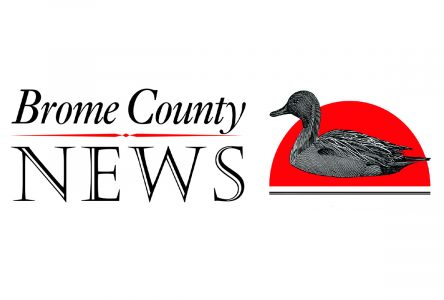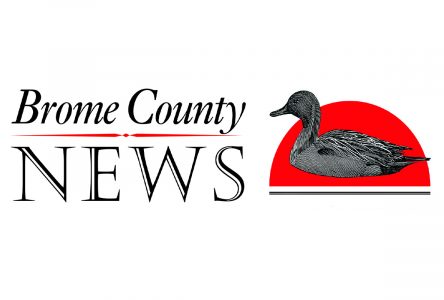After two years of pandemic restrictions, Renaissance Brome Lake (RBL) recently held in-person meetings on May 15 and May 26 to reconnect with its members, partners, local governments, and other environmental organizations in the region. During these meetings, RBL shared the organization’s recent achievements and priorities for 2022.
According to RBL’s press release, the group determined its top priority was to work with the Town of Brome Lake to limit the effects of boats designed to create large wakes. Hélène Drouin, President of RBL, explained that wakes have negative ecological impacts. “While Brome Lake is a good-sized lake, it is shallow and has many fragile areas,” she said.
Latest studies have recommended that boats designed to generate wakes operate at least 300 meters from shore and at least seven meters deep in water to minimize environmental impacts. Currently, the lake limits speeds on all boats to under 10 km/hr (clutch speed) within 150 meters of shore, conditions that are much less protective than experts recommend.
The final recommendation from RBL was to establish a boating zone for the operation of Wake and Surf boats on Brome Lake’s northwest side.
After discussing the organization’s top priority, Drouin took the opportunity to review RBL’s 2021 results and the projects completed by its volunteers and interns under the guidance of resident biologist and Project Manager Anaïs Renaud. The results can be seen below in the President’s Report.
In addition to supporting the Wake and Surf boat operating zone recommendation, RBL intends to participate in other projects and studies this year, such as water quality monitoring, surveying private ponds in the watershed, and controlling invasive exotic species like the Eurasian milfoil and the Rusty Crayfish.
Drouin also informed members and partners that the board of directors decided to select a new name and logo by the end of the year. “It’s time for our name to reflect our mission,” said Drouin. ‘Renaissance’ was chosen many years ago, and the board believed the name no longer represented the organization’s purpose. Attendees responded positively to the news at both events.
President’s Report: 2021 rundown
In Renaissance Brome Lake’s President Report, the organization revisited various initiatives from 2021
Last year would have marked the 20th anniversary of RBL’s founding, but celebrations did not go forward due to the pandemic. Despite this, the RBL team still successfully went ahead with other initiatives and projects.
At the end of 2021, the Board of Directors had eleven active members who met virtually eleven times during the year. Although in-person in 2020, the Annual General Meeting was held virtually in 2021, an event that marked the election of Gail Watt (West Bolton) and Daniel Morris. Over the following months, Richard Bickley, Bernard Côté (Bolton-Ouest), and Françoise Stanton joined the organization’s ranks.
Drouin thanked Caroline Renaud and Daniel Morris, who, during their last mandate, were valuable members of the organization. Special thanks went out to Pierre Fortier, who served as a director for more than ten years and resigned in 2021.
The organization also welcomed two interns from the biology and environment programs at the Université de Sherbrooke, Daphnée Gaudreault and Kayla Trempe-Kay, in addition to two students who operated the boat cleaning station, Ève Pelchat and Jacob Pelchat. Alix Tremblay, communications officer, also joined the team, and according to Drouin, has since done a tremendous job on the organization’s communications initiatives.
In addition to taking care of the organization’s regular activities and membership program, the team concentrated its efforts on the implementation of multiple projects.
First, the president reviewed the results of lake quality monitoring in 2021. From eleven outings, the organization determined the water transparency in Brome Lake was 3.0 m, comparable to the average of the last ten years (2.9 m), but much worse than the previous year (3.9 m).
The summer of 2021 characterized by a great drought followed by a hot and dry autumn. The water temperature remained high in September and October, which contributed to the appearance of cyanobacteria blooms and the lake’s level dropping 15 to 25 cm below its median for the last 15 years. As a result, the lake was classified as mesoeutrophic in 2021 and is therefore at an intermediate-advanced stage of eutrophication.
During RBL’s eight trips to measure water clarity (SQE), the organization noted an increase in the average concentration of phosphorus, nitrogen, and suspended solids compared to the 2008-2021 and 2020 averages. Cold Brook appeared to be the smallest nutrient and sediment contributor in 2021, with the other creeks falling in the following order, from the best to the worst water quality: Quilliams, Pearson, Argyll, Inverness, and McLaughlin.
The shoreline revitalization program, a joint effort between RBL and the Town of Brome Lake, was in its 5th and final year. Unfortunately, this program did not have the expected success. However, this past fall, two biology technicians visited properties on the waterfront to update RBL’s data to prioritize locations that need focus. This revaluation effort will allow the city to establish a new plan for the coming years.
As Quilliams Creek is the most significant water contributor to Brome Lake, RBL monitors activities in its watershed and works to preserve its integrity. In 2021, two field teams walked more than 20 km of the stream’s bank to obtain an accurate portrait of its condition and then draft a conservation plan for the creek and its habitats. This work was in addition to RBL’s efforts to stabilize sections of Quilliams’ by rebuilding and replanting critical areas along the floodplain.
In June 2021, a team from RBL worked with community volunteers to clean Cold Brook. More than 20 tires were collected, along with many plastic bags and metal artifacts that dated from the brook’s historical past.
RBL also worked to monitor the presence of rusty crayfish in the tributaries of Brome Lake. By doing this, RBL has observed that this invasive species is present in all the streams now, which has caused the native crayfish species to no longer be present in Brome Lake or its streams.
To prevent new invasive species from finding their way into Brome Lake, RBL continued to operate the boat wash station from May to October. Still set up across the road from Les Érables campground, 823 boats were cleaned in 2021.
In consultation with a group of boaters and city representatives, RBL developed a watermilfoil monitoring and control plan. As a result, RBL initiated a five-year monitoring plan of four of Brome Lake’s important grass beds. The monitoring will help RBL follow the evolution of the species. In addition, RBL conducted a characterization of shoreline wetlands at the mouths of the tributaries. The study revealed the presence of watermilfoil in the Cold and Argyll creeks.
RBL’s pond mapping project in 2016 found that many of the ponds in the watershed were ‘problematic.’ To follow up, the field team studied 24 ponds on private properties. The final findings were that the ponds did not have enough vegetation surrounding them and that many were struggling with invasive species and a high concentration of suspended sediments.
In addition to its environmental initiatives, 35 people joined RBL in September to paddle Brome Lake by canoe, kayak, and paddleboard. According to the report, the activity was a success and will likely return in 2022.
Drouin ended the President’s Report with a strong message. “Unfortunately, the future and the health of Brome Lake remains fragile. As we have done for the last 20 years, I can assure you that RBL will continue to protect and preserve the Lake as we enter our 21rst year.”


